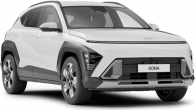While your average SUV looks like it could handle the bush few owners really believe deep down that they would if they were put to the test. Most SUVs are bought as family wagons and used to transport the kids to school and pick up the shopping from the supermarket. Rarely, if ever, do they venture beyond the city limits, and when they do it's usually only as far as a local beach or a nearby camping ground.
But Toyota was keen to show that its new RAV4 really could handle the rough going when it decided to launch its 2006 model in the Flinders Ranges in South Australia. It was a deliberate attempt by Toyota to prove its smallest off-roader was little more than a soft townie at heart.
MODEL WATCH
The all-new 2006 RAV4 was a far cry from the cute little fun wagon launched back in the 1990s. It was bigger in almost every dimension than its predecessor, it was also heavier by 180 kg, and it had grown into a full-sized family wagon with a much roomier interior. There were six models in the range with three levels of equipment: CV, Cruiser and Cruiser L.
All models came with the same 2.4-litre twin cam four-cylinder engine with variable valve timing boasting peak power of 125 kW at 6000 revs, that's up 5 kW, with the maximum torque unchanged at 224 Nm at 4000 revs.
There was a choice of a five-speed manual gearbox or four-speed auto, with part-time four-wheel drive. The RAV4 was essentially a front driver with drive sent to the rear wheels when the car's electronics deemed it necessary for safe traction.
Tested on gravel roads at the time of launch the system switched seamlessly from two-wheel drive to four-wheel drive, with the only indication a light on the dash to inform the driver the switch had taken place.
There was no low range for more serious offroad driving, but Toyota felt its on-demand system was sufficient for what most RAV4s would be used for. Underneath, the RAV4 had fully independent suspension at both ends, with MacPherson Strut at the front and wishbones at the rear. All models came with 17-inch alloy wheels, CD sound, tilt-and-reach steering wheel, heaps of storage compartments, and cup holders.
If you stepped up to the Cruiser mid-ranger from the base CV you got dual-zone air, traction control, hill-start assistance, and stability control. Climb further up the ladder to the Cruiser L and you also got leather, a power driver's seat, and both front seats were heated.
IN THE SHOP
Toyota enjoys a well earned reputation for quality and reliability, and although recent reports to Cars Guide suggest it has perhaps slipped a little from its lofty perch it is still right up there with the best.
Cars Guide readers rarely complain about the RAV4, which suggests they are happy with their choice of car. Build quality is of a good level, the interior plastics and other hardware stands up well to normal use.
With any SUV, including the RAV4, it's important to check for signs, not so much of use off-road, but of off-road abuse. It's possible to drive off the black top without beating your car to death, so check for underbody damage, damage to suspension and driveshafts that suggest an uncaring driver. Also look for evidence that regular maintenance has been carried out, particularly of oil and filter changes.
IN A CRASH
All models had ABS anti-skid brakes with brake-force distribution, along with active four-wheel drive, which endowed the RAV4 with decent active safety. For more, the Cruiser and Cruiser L offered traction control and stability control systems.
Add the passive protection of twin airbags on the CV, plus side and curtain airbags on the Cruiser and Cruiser L, and the RAV4 scrubbed up pretty well for safety, well enough to be awarded four out of a possible five stars by ANCAP.
AT THE PUMP
Toyota claimed it had squeezed a little more economy out of the RAV4, with the manual model down to 9.1 L/100 km. The figures provided by reader reporter David Simos suggest that Toyota's claim is pretty much on the money.
OWNER'S SAY
David Simos switched from a 2001 Volvo Cross Country to a 2009 RAV4 CV manual about 15 months ago in the hope of a more reliable run. He has since done almost 39,000 km and says there have been no problems and he is really pleased with it. Simos chose the cheapest Japanese/ Australian car that fitted four, a pram, stroller and port-a-cot, and that was the RAV4 CV manual. He says the sliding rear seat, which increases boot space, is great for work, the underfloor storage in the boot is excellent for storing a toolbox and foldaway trolley, but the swinging rear door can be a problem if you're parked in a tight spot or on an incline. The only issue of concern he has had is a whirring noise that seems to come from the front right of the vehicle at 70 km/h in higher gears, and he says it's revving a little higher than he would like at 100 km/h.
LOOK FOR
. Family-sized wagon
. Roomy interior
. Competent all-wheel driver
. Four-cylinder economy
. Quality build
THE BOTTOM LINE
No longer just for the young or young-at-heart the bigger, better RAV4 is a competent family all-rounder.
COMING UP
What do you think of your Hyundai i30? Send your comments to Graham Smith at Cars Guide or e-mail to grah.smith@bigpond.com.
Toyota RAV4 2006: Cruiser (4x4)
| Engine Type | Inline 4, 2.4L |
|---|---|
| Fuel Type | Unleaded Petrol |
| Fuel Efficiency | 9.7L/100km (combined) |
| Seating | 5 |
| Price From | $5,500 - $7,700 |
Pricing Guides



.jpg)

.jpg)







.png)











